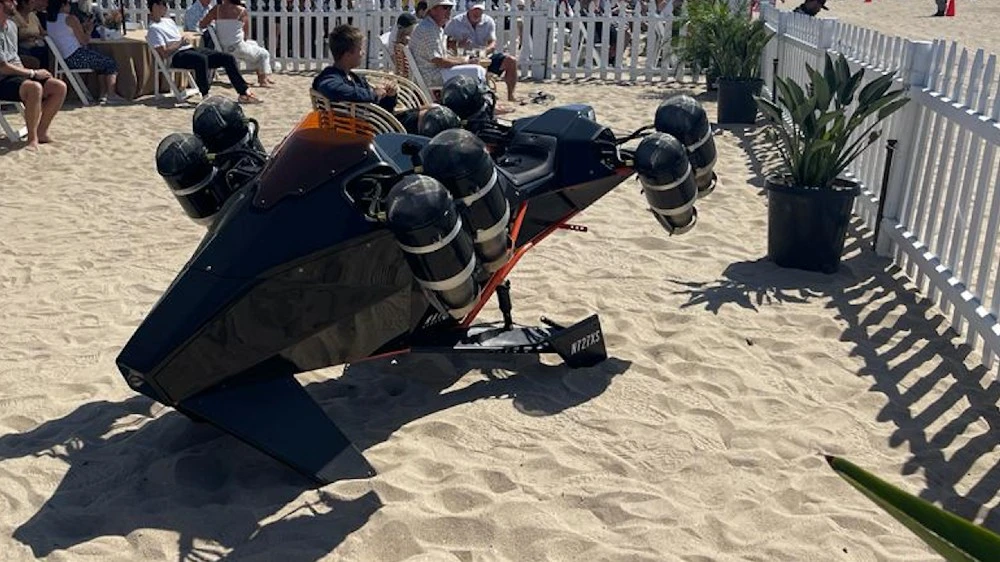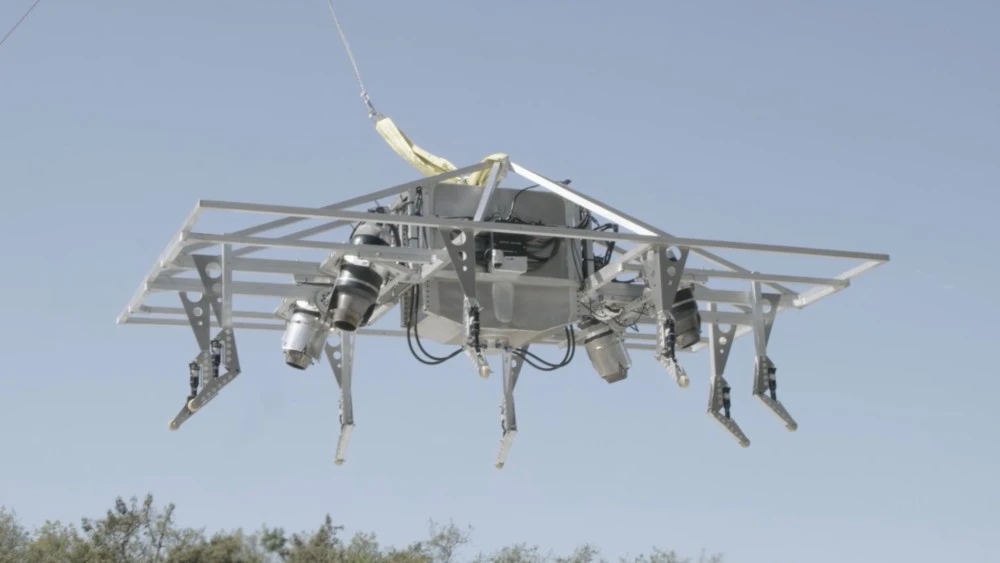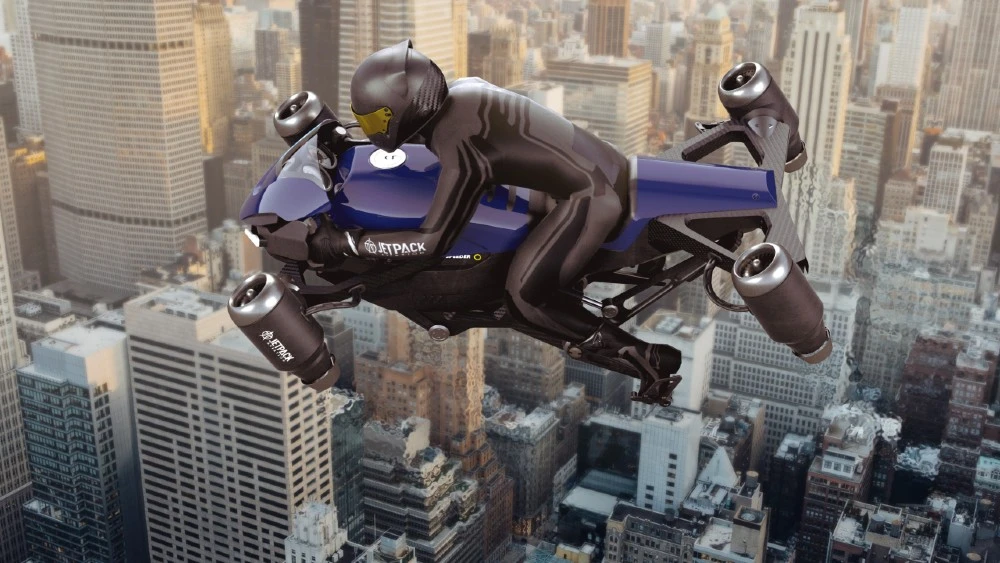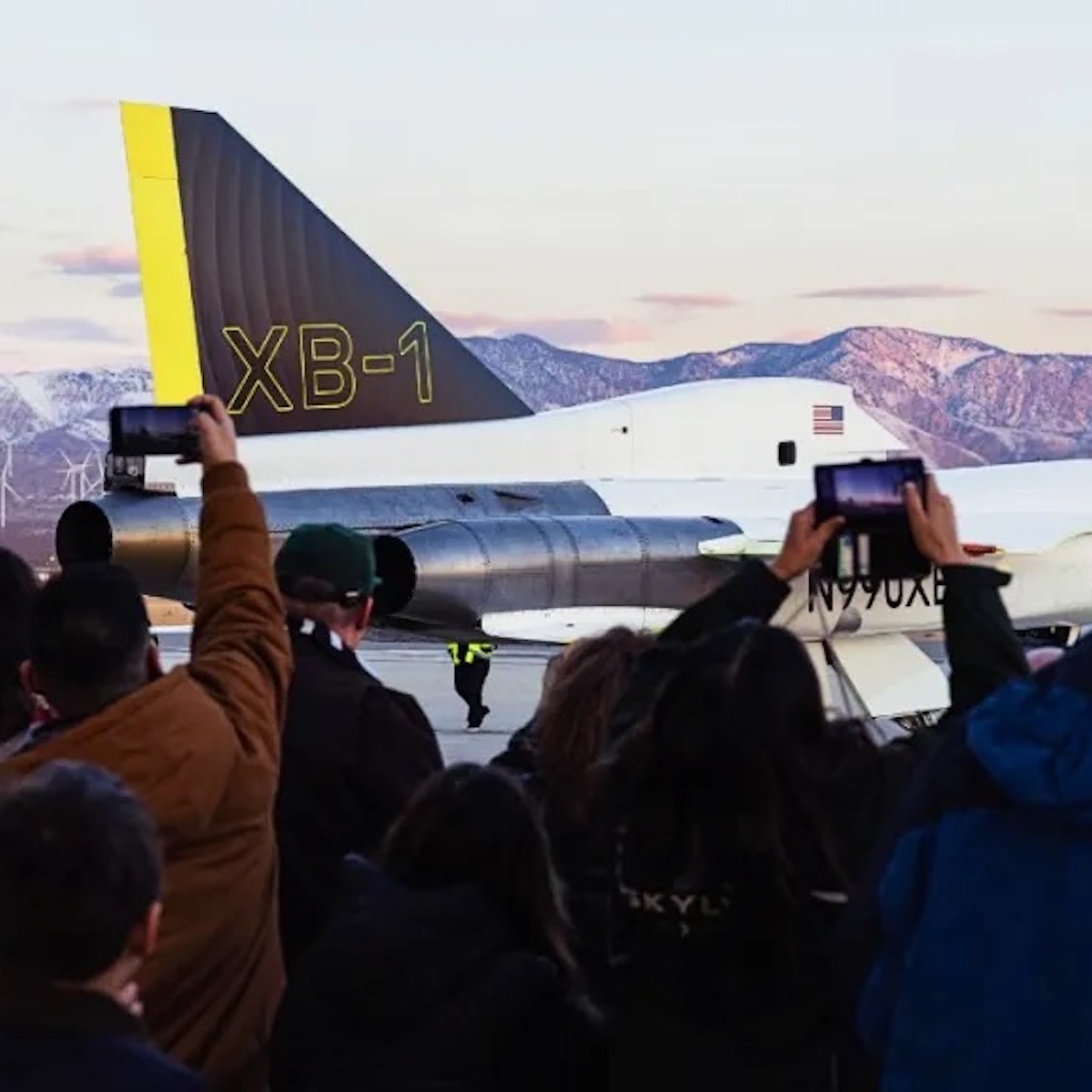One of the smallest jet aircraft ever designed could be several years away from becoming the first sky-legal motorcycle. When it’s certified by the FAA, the Jetpack Aviation Speeder will be a flying street bike that uses eight tiny-but-powerful jet engines to cruise 60 mph for about 30 minutes.
“We’re working on a special airworthiness certificate for experimental certification,” says Jetpack Aviation CEO David Mayman. “It’s taking longer than expected because this is a significantly different animal than the FAA has ever had to deal with before.”

While the original design had four turbines (as shown in the renderings), the final product will have eight (in the photos), two at each corner of the bike to provide safety through redundancy. They will also allow the roughly 300-pound Speeder to carry 600 pounds, a size-to-payload ratio that sets the Speeder apart from other VTOL craft.
A barebones Speeder P2 prototype is being tested at the company’s California facilities. It’ll be on a tether until it gains FAA certification. The prototype has achieved autonomous takeoffs and landings. It has also hovered and transitioned to forward flight. The company is also showing off a full-scale, slick-looking black model at events. “It’s designed for a pilot with a seating position similar to a motorcycle, with either feet down or back on foot pegs like a racing bike,” says Mayman.
An unmanned version is also being developed for the military market as a cargo aircraft. It can fly 100 feet above the ground at 400 mph, making it nearly impossible to shoot down. “We envision sending 10 of these from different directions, like a swarm of drones, all loaded with cargo for life-saving missions,” says Mayman.

Focusing on the military version first will be a way to fund prolonged testing before the aircraft eventually transitions into the flying motorcycle, or as Jetpack Aviation calls it, an “autonomous flying vehicle.” While AFV doesn’t have the same Easy Rider-cool ring, it does point to the potential of a new class of aircraft in what is now just a category of one.
In piloted-motorcycle form, the Speeder could potentially reach 250 mph, though even the best riders would have trouble staying on at that speed. So, the company has a governor for the engines and an altitude limiter. “Theoretically, you could keep going up to 16,000 feet before it ran out of fuel,” says Mayman, quipping. “But then you’d need a parachute.”

The Speeder will have fly-by-wire technology like fighter jets. The controls are designed to be simplistic, limited to switches on the hand grips—similar to a video game. “One is for takeoff and landing; the other for speed and climbing,” says Mayman. Once the Speeder takes off, it climbs to about six feet and hovers, with its internal flight controller waiting for instructions from the pilot. The control unit is connected to multiple sensors that detect where the aircraft is going and what obstacles it needs to avoid to prevent collisions. “If there’s a building or tree ahead, it will automatically detect and avoid,” he says.
The mini-jet engines will generate enough thrust to carry two riders, even three. But if the Speeder enters the FAA’s FAR Part 103 Ultralight category, it will be limited to a single passenger. Mayman says the Speeder could eventually go supersonic, though the company “doesn’t yet have a technical answer for that.”
A protective fuselage resembling an F1-style race car could provide the safety envelope needed to increase speed to 250 mph. “With little winglets, it could fly for nearly an hour,” says Mayman.

While certification is still years away, Mayman experienced a taste of what demand might be like at last summer’s Pacific Air Show. “We had a Speeder inside the VIP tent and a lot of people would come past and say, ‘I don’t need another Lamborghini or Bentley,’” he says. “‘I want that.’”
Get in line. The company has already started taking preorders for the Speeder, with an initial price of US$381,000 (HK$2,989,300).
All images courtesy of Jetpack Aviation.









